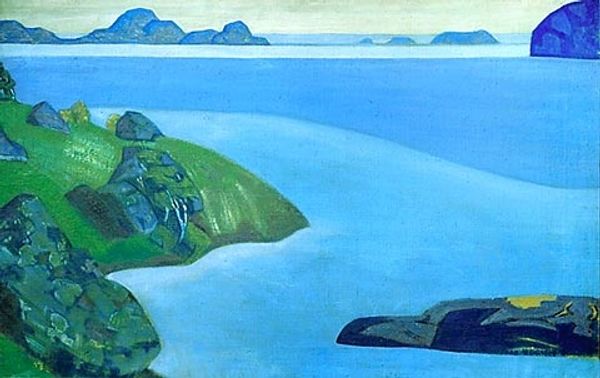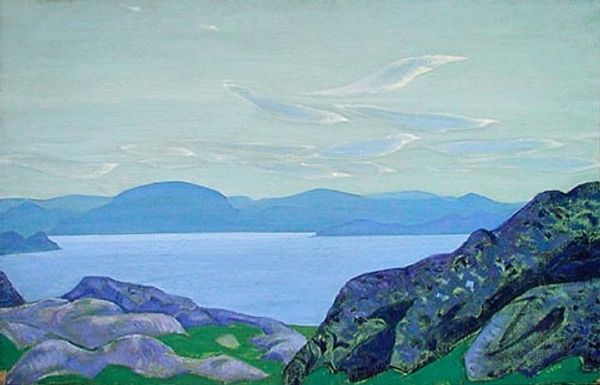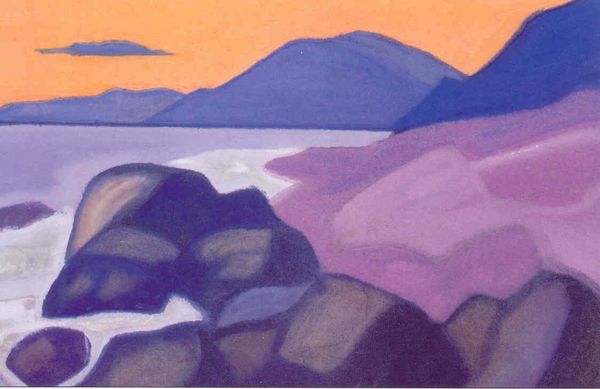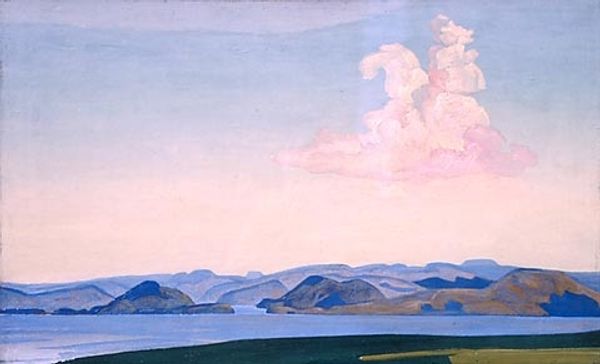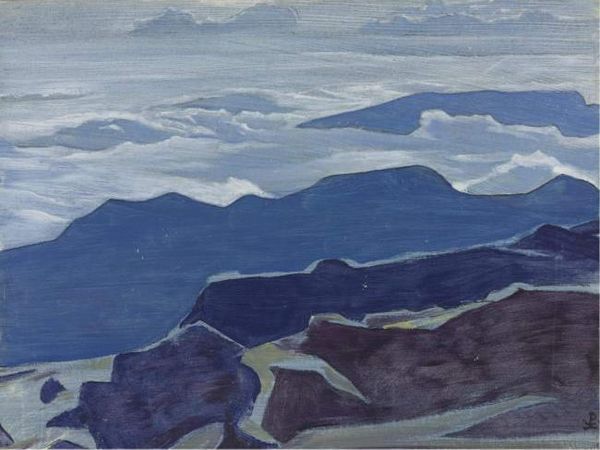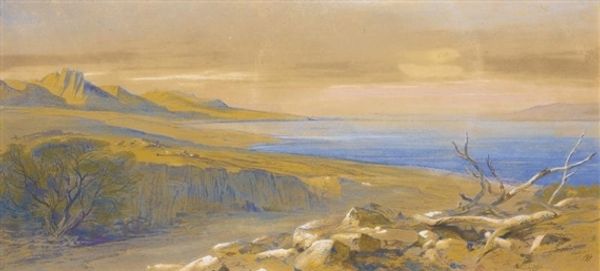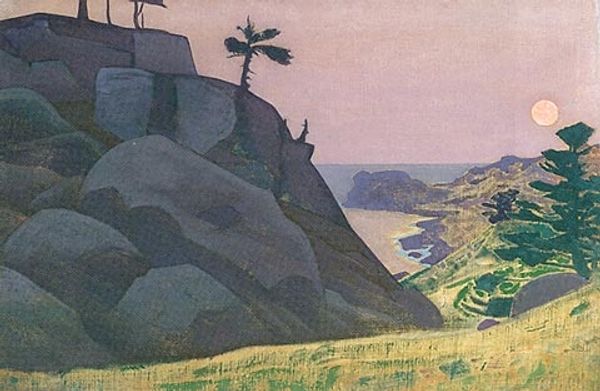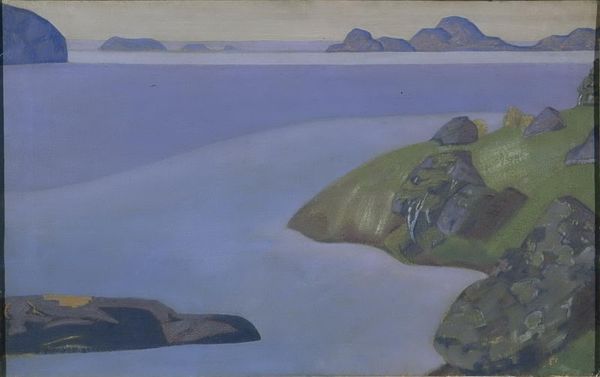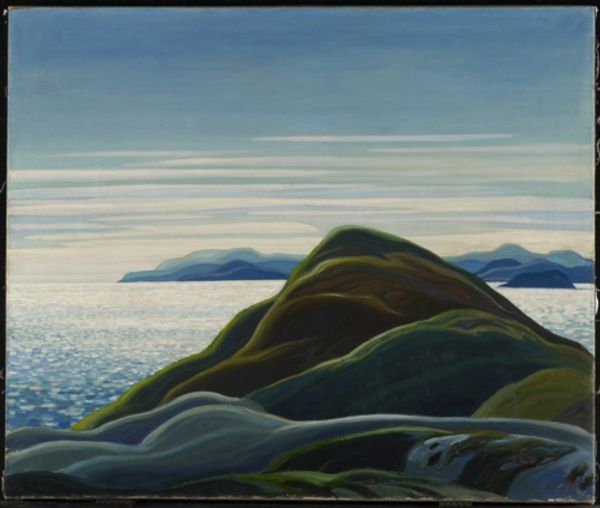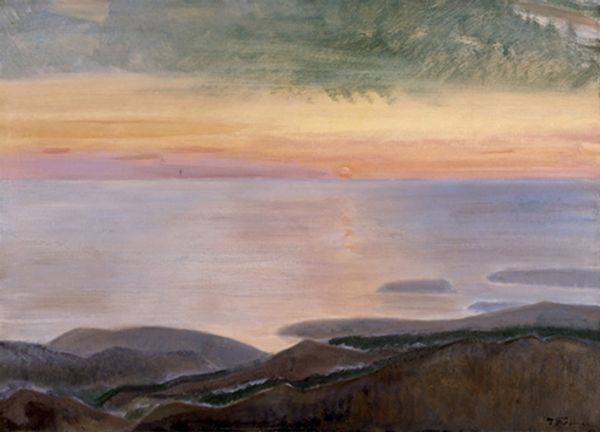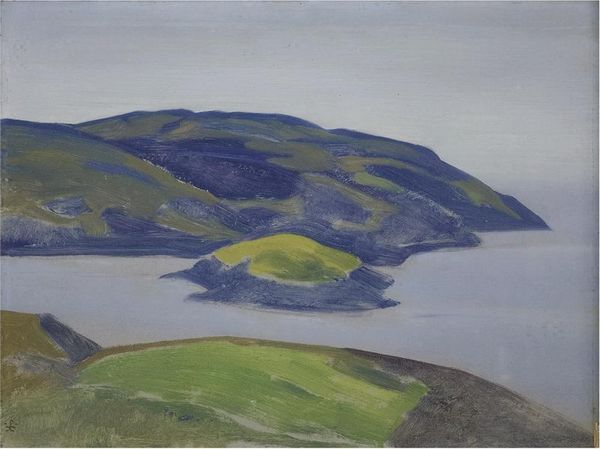
Copyright: Public domain
Editor: This is Nicholas Roerich's "Monhegan (Hope)," created in 1922 using oil paint. I'm struck by the stillness, almost a preternatural calm radiating from the scene. What do you see in this piece, especially given its historical context? Curator: Beyond the surface tranquility, I see a reflection of Roerich's own spiritual quest mirrored in the socio-political upheavals of his time. He painted this after the first World War and the Russian Revolution, a period of immense disruption. Does that perceived "hope," signaled in the title, speak to the anxieties and aspirations swirling around that period, do you think? Editor: That's interesting! The boat becomes less about seafaring and more a symbol for... escape, maybe? Or the journey toward a new world order? Curator: Exactly. Think about it: Roerich was deeply invested in Eastern philosophies and Theosophy. This landscape isn't just a place; it’s a state of mind. That single boat can represent a collective striving for spiritual enlightenment in the face of modernity's discontents. Do the color choices support that at all for you? Editor: Now that you mention it, the blues and purples do give off this otherworldly feel... it makes me think about journeys beyond the tangible, even in a natural scene. The pink on the horizon could speak to something sacred just beyond our vision. Curator: Precisely! Consider how he’s simplified the forms, almost reducing them to elemental shapes. Roerich was aiming to tap into a universal visual language, one that transcends cultural and political boundaries. But remember, even quests for unity can overlook power dynamics and societal disparities. Editor: This painting makes me realize how much more there is to art than what initially meets the eye, how artistic creation and interpretation reflect history in different ways. Thank you. Curator: The pleasure's all mine. Never underestimate art's capability to not only mirror a moment, but actively participate in its transformation, raising complex questions about humanity itself.
Comments
No comments
Be the first to comment and join the conversation on the ultimate creative platform.
